Nosta Restaurant
The best 10 mouth-watering Turkish Desserts
Published on:
July 29, 2021
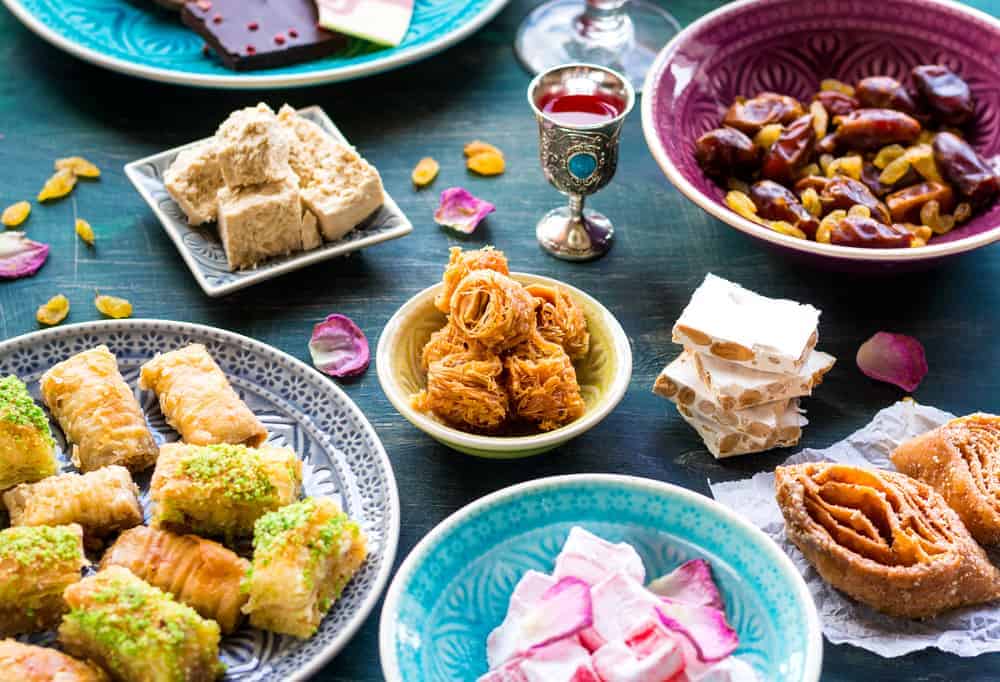
Turkey isn't just famous for its meaty cuisines. But, it has an excellent reputation in the confectionery world as well. Its treats have pleasant subtle flavours that you can hardly find in those from other regions. Thanks to
Turkey's fusion of Arabic and European confectionery proficiency.
If you wish to sample the delights, and yet you don't know which to start with, here are some of the most loved Turkish desserts you ought to check out.
Baklava
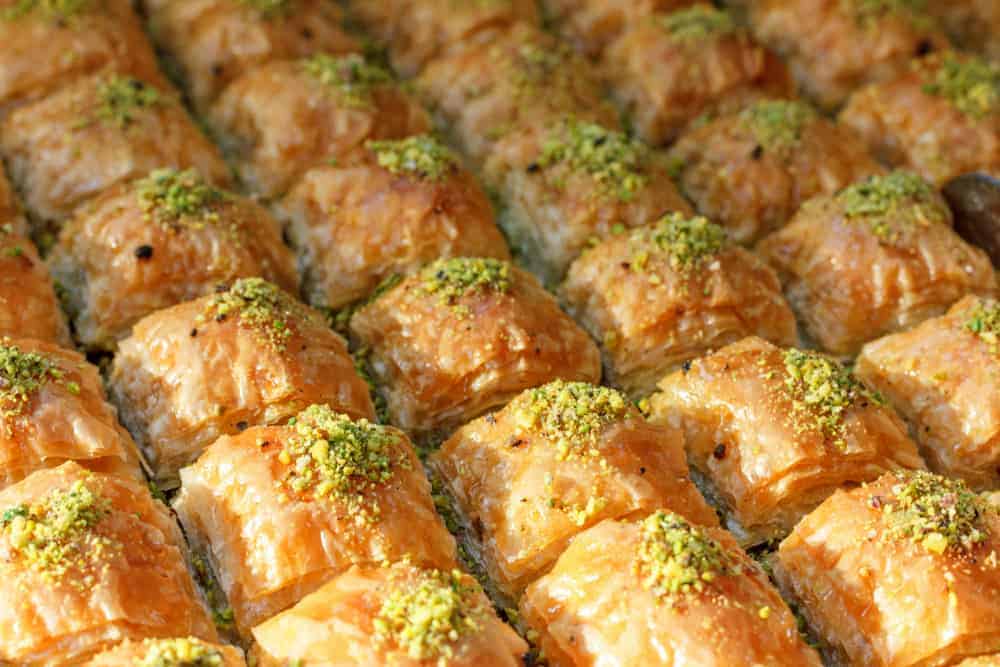
Dating back to 800BC, baklava is one of the oldest Turkish desserts available across the world. It is made of chopped pistachios, walnuts, or hazelnuts. The nuts are sandwiched in filo pastry sheets drenched in honey or sugar syrup. Baklava dessert is sweet and flaky. It is Turkey's national identity in the confection industry.
Kadayif
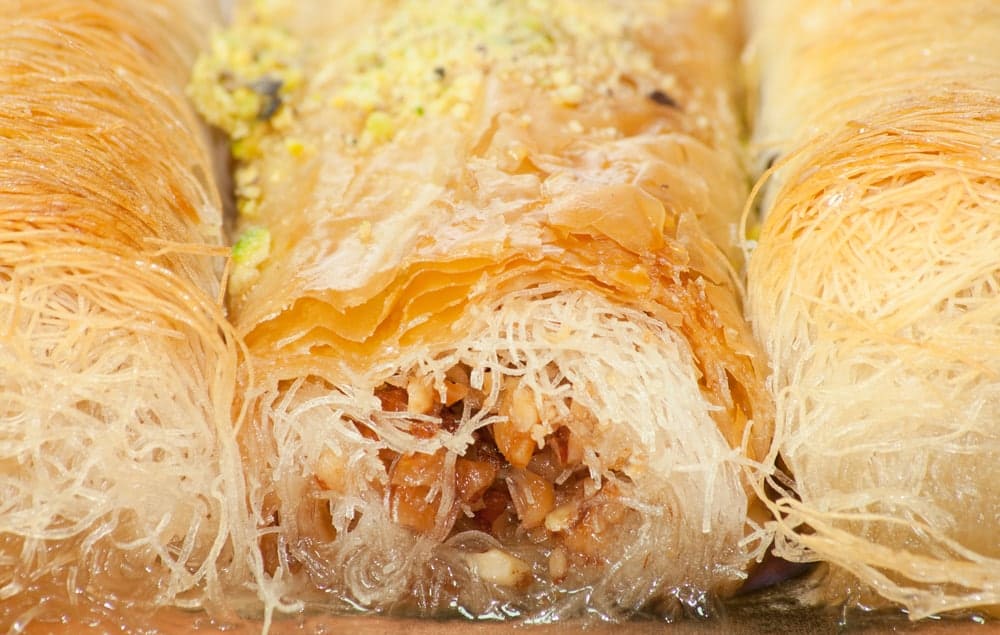
The Kadayif dessert is made of noodle-like dough wrapped around walnuts or pistachios. Afterwards, the dough-wrapped nuts are baked in an oven and topped with sugar syrup to give them a super-sweet, nutty relish. Some culinary enthusiasts top the dessert with margarine or melted cheese before baking.
Kunefe

Kunefe is a crispy dessert made of cheese covered in layers of shredded noodle-like dough, sweetened by sugar syrup. The mixture is baked until it forms a crisp, brown crust. Unlike many desserts, Kunefe is best served hot. Kunefe's recipe was invented in Palestine and perfected in Turkey.
Firinda Sutlac

Firinda Sutlac is made from rice, sugar, milk, water, and corn/wheat starch. The rice is cooked and then mixed with milk, sugar, and cornstarch. Afterwards, the pudding is oven-baked or broiled till it gets beautifully dark brown. After that, the browned pudding is topped up with chopped hazelnuts or pound cinnamon. It is best taken chilled.
Tavuk Gogsu

Traditionally considered a royal treat for Ottoman Sultans, this Turkish dessert stands among the most premium Turkish desserts you would taste. It is prepared from shredded and cooked chicken breast, mixed with a pudding made from cracked rice, milk, sugar, cinnamon, and cornstarch. The result is a milky-sweet pudding with a denser, fibrous, and stickier texture.
Asure

Popularly known as Noah's pudding, Asure has a special place in the lives of Turks. It was a celebratory dish made and shared in remembrance of the ark's landing. However, today, it is enjoyed all year round. The Turkish asure is a porridge-like dessert made from various nuts, whole grains, and dried fruits. It is sweetened with sugar or fresh fruit juice.
Kazandibi
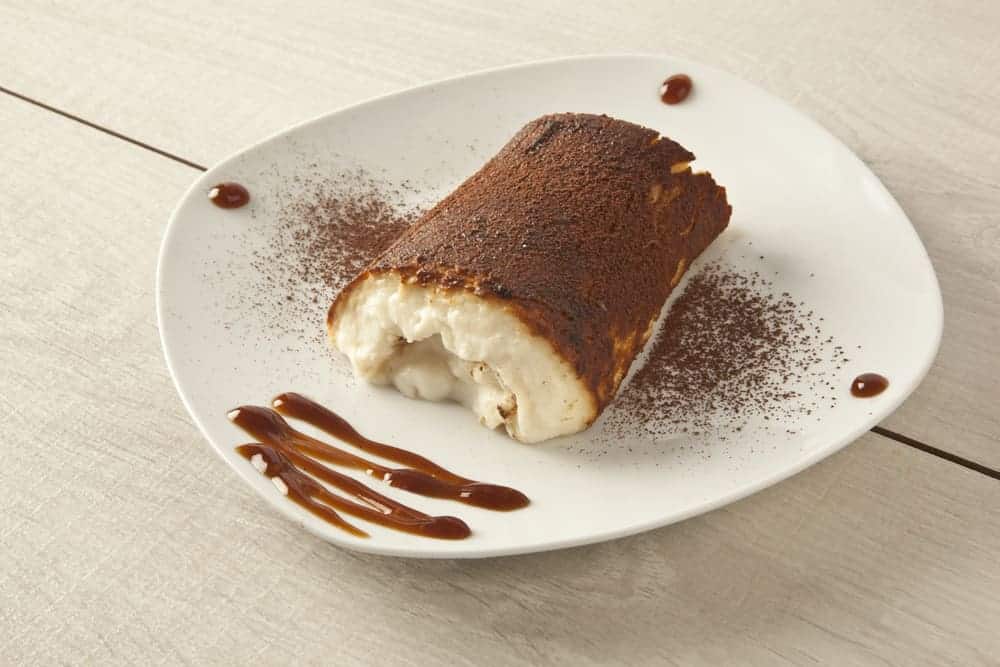
Kazandibi is a caramelized milk pudding with a burnt bottom. It is made from milk butter thickened with cornstarch or all-purpose flour, perfumed with mastic or vanilla extract, and sweetened with granulated sugar. It comes served as thin rolled ribbons with sweet, earthy, and milky flavours.
Lokma

Lokma is a favourite dish for special occasions like weddings, birthdays, and other ceremonies. The crunchy, doughnut-like treat is prepared from deep-fried unleavened dough drenched in honey or sugar syrup. Sometimes, chefs coat their Lokma with cinnamon. Dondurma
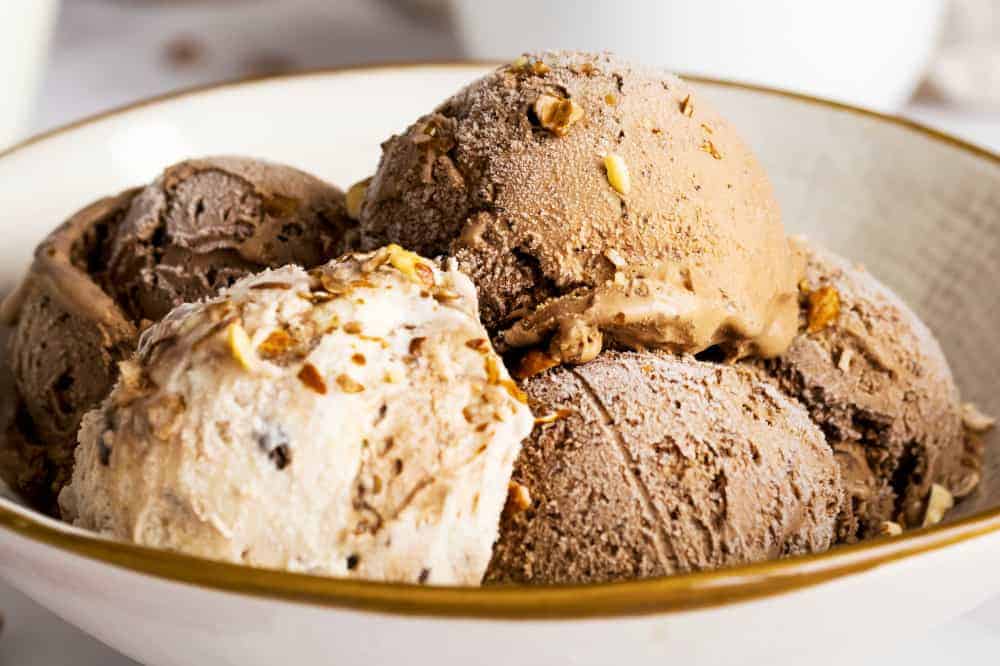
Also known as Turkish ice cream, Turks make Dondurma from whipped cream mixed with mastic resin, sugar, and powdered orchid bulb (salep). Unlike ordinary ice cream, Dondurma is stretchy and chewable. It doesn't melt quickly.
Lokum/Turkish Delight

Traditionally made for sultans, Lokum is a cube-like Turkish confection made from sugar and starch gel flavoured with lemon, rosewater, cinnamon, mint, or mastic. The sweets are often dusted with powdered tartar, sugar, or copra. Some lokum variations contain chopped hazelnuts, pistachios, walnuts, and dates bound by the gel.
Helva
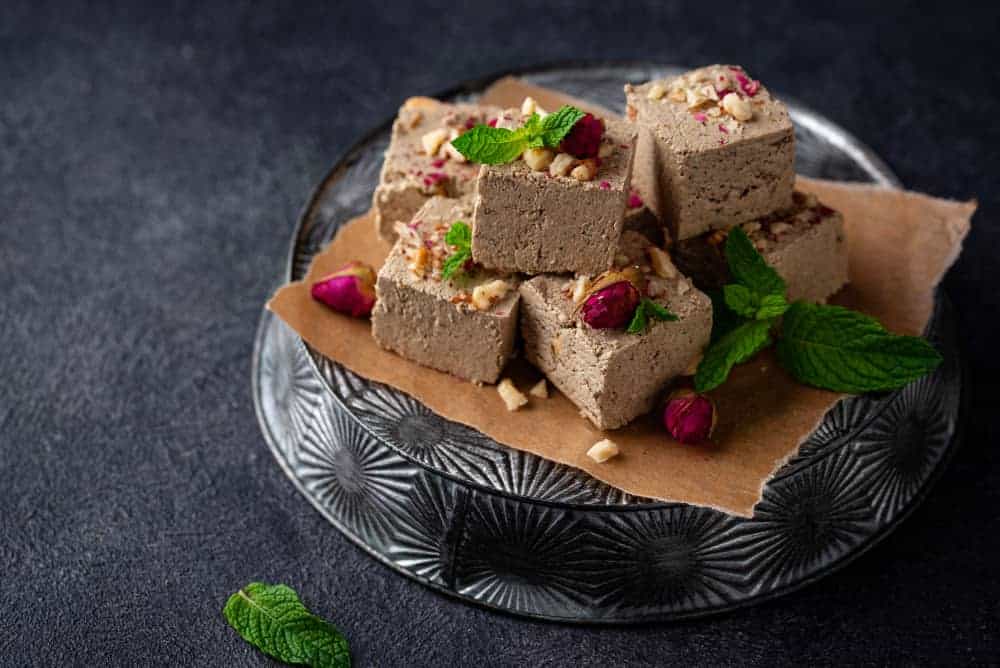
Helva is a dense, crumbly, sugar-sweetened sesame seed paste flavoured with vanilla or cocoa powder. This fudge-like confection has an intensely nutty, sweet flavour that can be strangely addictive. Some Turks use pistachios and walnuts to enhance the dessert's zest and nutritional profile.
Time for Dessert Sampling
With tens of Turkish desserts to choose from, you can never miss one whose zest incites your taste buds. What's more? You can always find most of these treats in
restaurants near you or
order them online. Frequently asked questions
What are Turkish sweets called?
Turkish sweets are collectively known as Şekerleme. While the country makes a dizzying array of sweets, Turkish Delight, also known as Lokum, takes the fame. They boast of a delicately gummy texture, perfectly infused with rosewater. No wonder they are so popular out of the Turkish boundaries.
What are the four types of desserts?
⦁ Puddings
Pudding is a type of dessert course with a spongy, relatively homogenous, soft texture. In most cases, puddings are made of fruit juice or milk, thickened with flour, corn/wheat starch, gelatin, bread, or eggs.
⦁ Cakes
Simply defined, cakes are tender, sweet pieces of bread. They are made of sugar, flour, eggs, flavours, icings, and leavening agents. Most people use cakes as celebratory dishes for birthdays, anniversaries, weddings, commemorations, and other special occasions.
⦁ Candies
Also known as sweets, this category encompasses those desserts with sugar as their main ingredient. They are flavoured with chocolate, nuts, fruits, and artificial sweeteners. Usually, candies come in small sizes, eaten as snacks or end meals.
⦁ Cookies
A cookie is a small, flat, crunchy dessert made from sugar, flour, and cooking oil. Some cookies may contain nuts and grains. They are often served as a snack accompanied by coffee, tea, juice, and milk.
Kunefe is a Turkish pastry that originated from Turkey's Hatay Province. However, several Kunefe variations are popular in Arabic countries like Greece, Egypt, Caucasus, Palestine, and the Balkans.
Unlike many desserts eaten cold or chilled, Kunefe is best taken hot when its cheese is soft. Before serving, garnish the dessert with ground pistachios, and cut it into small bite-size wedges. You can take it with coffee.
In Turkey, Kunafa means to surround or to enclose. Perhaps, Turks opted to use this word since Kunafa is simply a cheese enclosed in layers of pastry threads and then sweetened and scented with sugar syrup.
Baklava is a Turkish name meaning pile up. Culinary-wise, baklava is a dessert with sheets of thin dough stuffed with chopped nuts. The dough is often flavoured with honey, rosewater, or sugar syrup and cut into bite-size triangles, rectangles, or diamond shapes.
What's the difference between Greek and Turkish baklava?
A classic Greek Baklava is made explicitly from walnuts sandwiched in honey-soaked filo pastry. On the other hand, Turkish baklava is made of more ingredients. It contains ground pistachios and butter, sandwiched in layers of filo dough, and then topped up with sugar or honey syrup.
What is the green powder used in Turkish sweets?
The green powder often used in Turkish sweets and other desserts are Pistachio powder. It has a rich earthy, slightly sweet flavour. Like other nuts, pistachios are rich in proteins, healthy fatty acids, antioxidants, phosphorus, and vitamin B6.
What is in Turkish ice cream?
Locally known as Dondurma, this classic Turkish ice cream contains mastic gum, sugar, salep flour, and whipped cream. However, today, some Dondurma manufacturers use guar gum in place of salep flour.
What is made of Turkish Delight?
A Turkish Delight is a group of bite-size confections made from a sugared starch gel flavoured with rose water, lemon juice, or mastic extraction. The candies may contain chopped nuts suspended in the starchy gel.
Are Turkish delights vegan?
The traditional Turkish Delights were utterly vegan. They contained plant-based ingredients only. However, nowadays, some manufacturers use gelatin in place of cornstarch and cream of tartar. So, if you have issues with animal products, you will need to check the delights' ingredients just before you take a bite.
What is the best brand of Turkish Delight?
Established in 1777, when Turkish Delight was invented, Haci Bekir is the undisputed Turkish delights king. It has generations of experience in making and selling authentic Turkish delights. Though it started as a small local shop, today, Haci Bekir serves the US, Norway, Middle East, New Zealand, Malaysia, and other parts of the world.
Who invented Turkish delights?
The Turkish Delight was developed in 1777 by Ali Muhiddin Bekir Efendi, an ingenious confectioner from Anatolia. Ali Muhiddin made Lokum in response to the sultan of Istanbul's demand for soft, sweet, unique confectionary. In no time, Lokum became a popular gift, more especially for lovers courting.
Ali Muhiddin started opened a Lokum shop in Istanbul to cater to the ever-rising demand for the Delight. Today, the small shop is known as Haci Bekir, a famous confectionery brand serving several countries.
Does Turkish Delight have gluten?
The Turkish Delight is entirely free of gluten. As such, it is safe for gluten-sensitive dessert lovers and any other person who wishes to limit their exposure to gluten, a supposedly harmful compound found in some grains.
Can people with diabetes eat Turkish Delight?
Turkish Delight isn't suitable for people with diabetes as it contains high sugar content. However, reputable brands like Thornton manufacture sugarless Turkish Delights for diabetic dessert lovers with a severe craving for this famous confectionary











